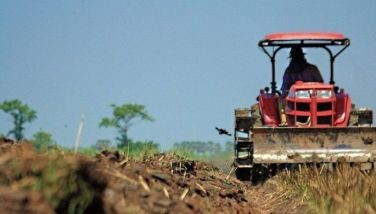Fillet-size tilapia can be grown in earthen ponds
August 20, 2006 | 12:00am
Tilapia can be grown to fillet size (500-650 grams) in earthen ponds.
This was proven in a research done by the DA-Bureau of Fisheries and Aquatic Resources-National Freshwater Fish Technology Center (DA-BFAR-NFFTC).
The nine-month study was conducted at the DA-BFAR-NFFTC in the Central Luzon State University (CLSU) compound in Muñoz, Nueva Ecija.
The study’s results were reported by BFAR’s Eva Safra at the 2006 National Agriculture and Fisheries Seminar Series and Technology forum organized by the Bureau of Agricultural Research (BAR).
"Fish fillet is a value-added product and has a great potential as a dollar-earning industry in the international market," BAR stated.
It noted that in the Visayas and Mindanao, market acceptance for tilapia is not as great as in Central Luzon because people in central and southern Philippines are more fond of marine fish.
"In this area, growing of fillet-size tilapia has great potential," BAR said.
Phase 1 of the project consisted of two treatments.
Treatment 1 was the application of delayed feeding technique wherein supplemental feeding began 45 days after stoking. During the 1-45-day period, the fingerlings depended on natural food present in the pond.
In Treatment 2, supplemental feeding started a day after stocking.
Two ponds assigned for Treatment 1 were fertilized with chicken manure and 16-20-0 at 2,000 kilograms per hectare and 100 kg/ha, respectively, to maintain the growth of natural food. Fingerlings of SET EXCEL (a genetically improved tilapia) with an average weight of 0.27 gram were stocked in the pond at five pieces per square meter stocking density.
Sampling was done 45 days after stocking and every 30 days thereafter for feeding rate adjustment. The fish were harvested after four months.
Results showed that the fish in Treatment 2 grew faster and had greater survival and yield than those in Treatment 1.
Phase 2 involved the further culturing of male fish to fillet size.
After four months from Phase 1, it is advisable to lower the stocking density to grow the fish for another four months to achieve fillet size with an average weight of 550 grams, BAR said. – RAF
This was proven in a research done by the DA-Bureau of Fisheries and Aquatic Resources-National Freshwater Fish Technology Center (DA-BFAR-NFFTC).
The nine-month study was conducted at the DA-BFAR-NFFTC in the Central Luzon State University (CLSU) compound in Muñoz, Nueva Ecija.
The study’s results were reported by BFAR’s Eva Safra at the 2006 National Agriculture and Fisheries Seminar Series and Technology forum organized by the Bureau of Agricultural Research (BAR).
"Fish fillet is a value-added product and has a great potential as a dollar-earning industry in the international market," BAR stated.
It noted that in the Visayas and Mindanao, market acceptance for tilapia is not as great as in Central Luzon because people in central and southern Philippines are more fond of marine fish.
"In this area, growing of fillet-size tilapia has great potential," BAR said.
Phase 1 of the project consisted of two treatments.
Treatment 1 was the application of delayed feeding technique wherein supplemental feeding began 45 days after stoking. During the 1-45-day period, the fingerlings depended on natural food present in the pond.
In Treatment 2, supplemental feeding started a day after stocking.
Two ponds assigned for Treatment 1 were fertilized with chicken manure and 16-20-0 at 2,000 kilograms per hectare and 100 kg/ha, respectively, to maintain the growth of natural food. Fingerlings of SET EXCEL (a genetically improved tilapia) with an average weight of 0.27 gram were stocked in the pond at five pieces per square meter stocking density.
Sampling was done 45 days after stocking and every 30 days thereafter for feeding rate adjustment. The fish were harvested after four months.
Results showed that the fish in Treatment 2 grew faster and had greater survival and yield than those in Treatment 1.
Phase 2 involved the further culturing of male fish to fillet size.
After four months from Phase 1, it is advisable to lower the stocking density to grow the fish for another four months to achieve fillet size with an average weight of 550 grams, BAR said. – RAF
BrandSpace Articles
<
>
- Latest
Latest
Latest
April 10, 2024 - 5:12pm
By Ian Laqui | April 10, 2024 - 5:12pm
March 4, 2024 - 3:32pm
By Ian Laqui | March 4, 2024 - 3:32pm
March 4, 2024 - 2:12pm
By Kristine Daguno-Bersamina | March 4, 2024 - 2:12pm
February 17, 2024 - 2:31pm
February 17, 2024 - 2:31pm
February 13, 2024 - 7:17pm
By Ian Laqui | February 13, 2024 - 7:17pm
Recommended


























